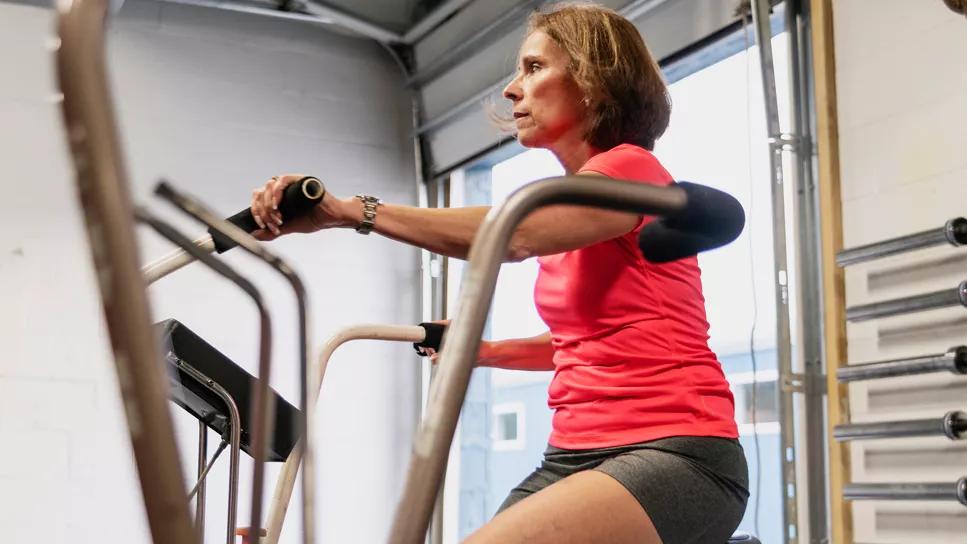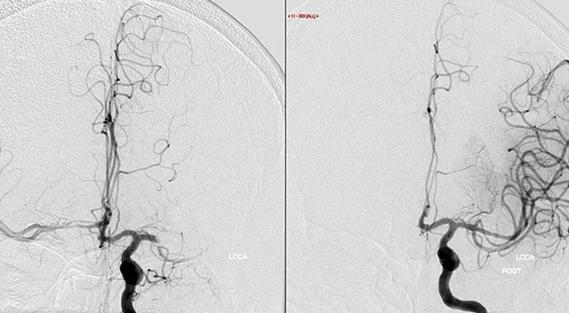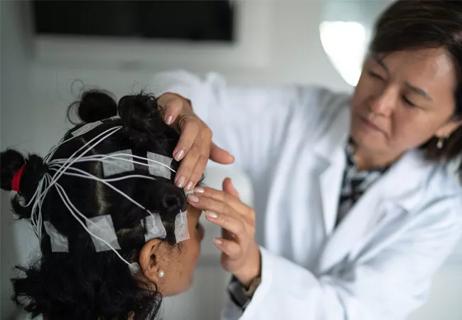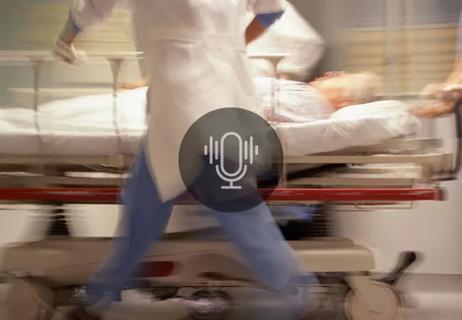Research to test clinical efficacy and cost-effectiveness versus standard-of-care rehab

Cleveland Clinic investigators are launching a novel randomized clinical trial to assess effects of forced exercise (FE) on upper extremity (UE) and lower extremity (LE) motor recovery post-stroke. Called I-SCORE, the study is designed to elucidate neural and biochemical substrates of FE-induced motor recovery and evaluate the cost-effectiveness of a FE-centered intervention compared with traditional stroke rehabilitation.
Advertisement
Cleveland Clinic is a non-profit academic medical center. Advertising on our site helps support our mission. We do not endorse non-Cleveland Clinic products or services. Policy
“Aerobic exercise is known to improve cardiovascular function post-stroke, and strong theoretical arguments suggest that it can facilitate motor recovery,” says Susan Linder, DPT, PhD, Director of Clinical Research in Cleveland Clinic’s Department of Physical Medicine and Rehabilitation, who is leading the study. “With a rigorous protocol, we will be testing the theory that patients three to nine months out from stroke can benefit from forced exercise combined with abbreviated physical therapy and occupational therapy, and at lower cost than traditional rehab.”
The work is being supported by a $3.15 million, five-year award from the National Institute of Child Health and Human Development.
The study is an outgrowth of previous insights from the same researchers about FE cycling — mechanical supplementation of volitional movements. Their randomized trial of patients with UE hemiparesis who were studied six or more months post-stroke showed that FE immediately before UE repetitive task practice resulted in robust improvements in UE function and locomotion (Neurorehabil Neural Repair. 2024;38[4]:291-302). A subanalysis of the same cohort found that FE also significantly and meaningfully improved cardiovascular function (Arch Phys Med Rehabil. 2024;105[5]:835-842).
The new study, which will enroll 66 patients with hemiparesis due to stroke over a four-year period, differs from and builds upon the previous research by:
Advertisement
Patients will be randomized to FE followed by abbreviated motor retraining (FE + rehab) or standard motor retraining (usual care). Two 90-minute sessions will be held per week for 12 weeks, for a total of 24 sessions.
In the FE + rehab arm, the first 45 minutes of retraining (five-minute warm-up, 35-minute main FE set and five-minute cool-down) will be done in a small-group setting. Patients will use an arm and leg bike ergometer with a pedaling rate augmented to > 75 RPM, the speed that produced positive results in the previous Cleveland Clinic studies. The second 45 minutes will be done as one-on-one training: UE task practice with an occupational therapist and gait training with a physical therapist.
In the usual care arm, in contrast, patients will receive 45 minutes of targeted UE with an occupational therapist and 45 minutes of gait training with a physical therapist.
Clinical outcomes to be assessed are change in UE motor impairment from baseline to end of treatment (EOT), change in gait velocity at EOT, cortical activation at baseline and EOT as measured on EEG, and pre- and post-therapy levels of free circulating peripheral BDNF and IGF-1.
FE, the researchers hypothesize, will increase overall cortical engagement and reduce functional asymmetry. “A larger reduction in functional asymmetry in the FE + rehab group would support the hypothesis that FE priming helps facilitate recovery of more severely damaged circuits,” Dr. Linder explains.
BDNF and IGF-1 are considered biochemical substrates and building blocks of neuroplasticity. As with cortical activation, the researchers believe FE will have a positive effect, increasing peripheral levels of these factors. Whatever the outcome, the findings will be novel. “This is the first human trial to measure the relationship between neurochemical biomarkers following aerobic exercise and motor recovery,” Dr. Linder notes.
Advertisement
The cost-effectiveness of FE + rehab versus usual care will be modeled over immediate and long-term horizons based on PROMIS-29 scores for quality of life across seven domains of physical and mental health. Degree of disability also will be measured using a modified Rankin scale.
“Aerobic exercise and group-based intervention have considerable promise in improving stroke outcomes, but they currently are not reimbursed by Medicare or most third-party payers,” Dr. Linder says. “FE + rehab is low-cost, so our hope is that if we can document its efficacy and cost-effectiveness simultaneously, that will facilitate clinical integration and acceptance by payers.”
Recruitment will start in October, and clinicians outside Cleveland Clinic are welcome to refer subacute stroke patients willing to commit to twice-weekly sessions for 12 weeks. Results are expected in four to five years.
“The next logical step would be implementation research to test FE + rehab in a clinical environment to see if there are any barriers to workflow or implementation,” Dr. Linder says. “By achieving the aims of this trial, we hope to set the stage for rapid deployment of a better, more cost-effective therapy for recovery of function after stroke.”
Advertisement
Advertisement

Increasing treatment options are extending the window for continued functional gains

Study links large artery atherosclerosis and delayed presentation to poorer treatment results

$3.2 million grant will fund use of calcium-based imaging to record neuronal activity in ischemia model

Findings from large cohort analysis can guide ongoing quality improvement initiatives

Insights and what’s next for the first U.S. mobile stroke unit to treat patients

Times to target blood pressure, CT and medication administration shorter than with EMS transport

Many patients unnecessarily continue the medications for years

AHA scientific statement offers best practices to improve care for high-risk populations